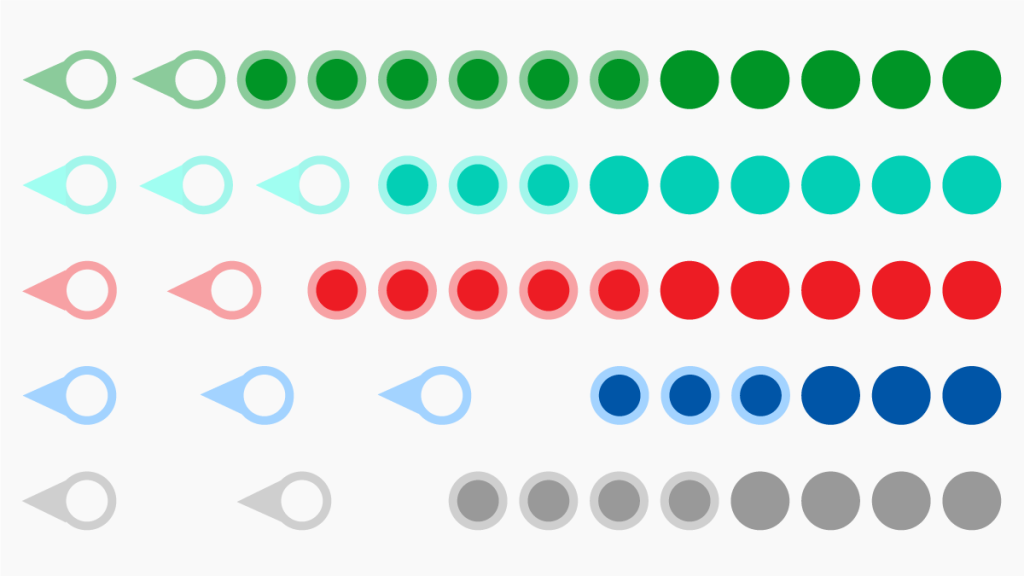The graph shows the last seat assigned in each province that is the most disputed, meaning where the seat can change hands with the fewest votes. The direction of the trail in the graph indicates whether the party vying for the seat is increasing or decreasing in percentage of votes compared to 10 points earlier in the count: if it is to the left, it is advancing; if it is to the right, it is retreating. This information helps to track the trends in the assignment of seats as the count progresses.
The following graph illustrates how seats are allocated to each party as the count progresses, allowing observers to see if there are positive or negative trends for each political party. It is important to pay attention to what is happening in the early stages of the count in order not to miss any important developments. Subscribing to updates can help stay informed about the latest developments in the allocation of seats and trends in the electoral results.
While some trends may not be immediately reflected in the movement of seats, it can be useful to monitor the evolution of the total votes for each party to identify any emerging patterns. By analyzing the total number of votes for each party, observers can potentially detect trends that have not yet been reflected in the allocation of seats. This information can provide valuable insights into the overall electoral landscape and the performance of political parties in the election.
Tracking the last seat assigned in each province and analyzing the trends in seat allocation can provide valuable information about the competitive nature of the election and the dynamics of the political landscape. By understanding which seats are most disputed and how parties are faring in terms of vote share, observers can gain insights into the potential outcomes of the election and the strengths and weaknesses of different political parties. This information can be useful for voters, analysts, and political parties seeking to understand and interpret the results of the election.
By subscribing to updates and monitoring the trends in seat allocation and total votes for each party, observers can stay informed about the latest developments in the election and gain a deeper understanding of the electoral process. This information can help voters make informed decisions, analysts provide accurate assessments, and political parties strategize effectively. Understanding the evolving dynamics of the election can provide valuable insights into the political landscape and the potential outcomes of the election.
Overall, by tracking the last seat assigned in each province, analyzing trends in seat allocation, and monitoring the total votes for each party, observers can gain a comprehensive understanding of the electoral process and the competitive dynamics of the election. This information can be valuable for a wide range of stakeholders, including voters, analysts, and political parties, as they seek to interpret the results of the election and make informed decisions based on the evolving political landscape.


